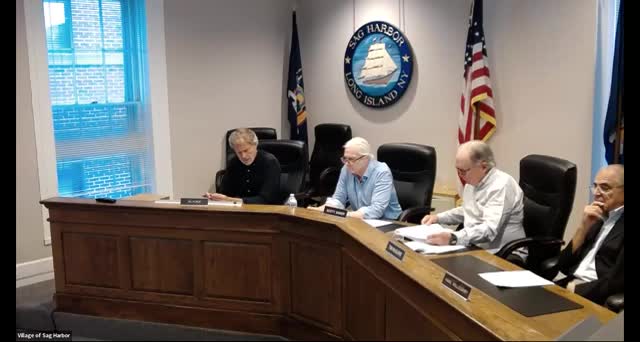Historic Home Solar Debate Sparks Community Controversy
June 20, 2024 | Sag Harbor, Suffolk County, New York

This article was created by AI summarizing key points discussed. AI makes mistakes, so for full details and context, please refer to the video of the full meeting. Please report any errors so we can fix them. Report an error »

In a recent government meeting, officials grappled with the implications of a proposed solar panel installation at a historic property, raising concerns about potential precedents and the preservation of neighborhood character. The discussion centered on whether granting a variance for the solar panels would open the floodgates for similar requests, potentially altering the aesthetic and historic integrity of the area.
Several board members expressed apprehension that allowing the installation could lead to a surge of applications from other homeowners seeking similar exceptions, particularly in light of existing properties that already encroach on setback regulations. The issue of glare from solar panels was highlighted as a significant concern, with one member noting that such installations could negatively impact neighbors' quality of life.
The conversation also touched on the role of local historic preservation guidelines, with members debating whether the proposed solar panels would blend harmoniously with the historic character of the neighborhood. The board acknowledged the need for a careful evaluation of each case, emphasizing that decisions should be made on a case-by-case basis rather than establishing a broad precedent.
While some members advocated for the benefits of solar energy and its potential to enhance community resilience, others remained firm in their stance against compromising the historic fabric of the village. The discussion underscored the tension between advancing renewable energy initiatives and maintaining the aesthetic and historical values that define the community.
As the meeting concluded, officials recognized the necessity for clearer guidelines regarding solar installations in historic districts, suggesting that changes to the existing code may be required to provide the flexibility needed for future applications. The board's deliberations reflect a broader challenge faced by many communities as they navigate the intersection of sustainability and preservation.
Several board members expressed apprehension that allowing the installation could lead to a surge of applications from other homeowners seeking similar exceptions, particularly in light of existing properties that already encroach on setback regulations. The issue of glare from solar panels was highlighted as a significant concern, with one member noting that such installations could negatively impact neighbors' quality of life.
The conversation also touched on the role of local historic preservation guidelines, with members debating whether the proposed solar panels would blend harmoniously with the historic character of the neighborhood. The board acknowledged the need for a careful evaluation of each case, emphasizing that decisions should be made on a case-by-case basis rather than establishing a broad precedent.
While some members advocated for the benefits of solar energy and its potential to enhance community resilience, others remained firm in their stance against compromising the historic fabric of the village. The discussion underscored the tension between advancing renewable energy initiatives and maintaining the aesthetic and historical values that define the community.
As the meeting concluded, officials recognized the necessity for clearer guidelines regarding solar installations in historic districts, suggesting that changes to the existing code may be required to provide the flexibility needed for future applications. The board's deliberations reflect a broader challenge faced by many communities as they navigate the intersection of sustainability and preservation.
View full meeting
This article is based on a recent meeting—watch the full video and explore the complete transcript for deeper insights into the discussion.
View full meeting
